Introduction
Understanding the world of Midgard and NieR’s depiction of Tokyo is no easy feat. The world’s history spans the entirety of three different games (so far), and each has multiple endings that lead into different timelines. For the purposes of this article, we’ll be examining the timeline that brings us to the events of NieR: Automata. This means that we’ll only be covering the events in the relevant branches for each game, but do note that the endings we do leave out also contain lore points that will help to further your understanding of this world.
We’ll be going through significant events like the Flower’s appearance in Drakengard 3, the creation of the Cult of the Watchers, the defeat of the Queen-beast and appearance of the Legion, as well as the start of Project Gestalt and the events of the original NieR. Events get a little muddy after NieR’s ending, but we’ll do our best to explain some possible connections and links between the original and Automata.
Part One: The Flower and the Intoners
The main antagonist of the Drakengard series isn’t some crazy, cackling villain; instead, it’s a small white flower that looks innocuous to anyone who passes by. No one is really sure where the Flower actually came from or what it is exactly, except that it has to be the product of some form of black magic. Either way, the important thing to take away here is the fact that the Flower is evil, and it wants to destroy the world. The story of Drakengard and NieR starts with this Flower.
The Flower gained power by latching on to a young sex worker who was on the brink of death. By implanting itself in the girl’s eye, the girl was brought back to life and she gained the power of Song. After her rebirth, the girl threw away her old name and started calling herself Zero. This is the protagonist of Drakengard 3. However, after learning of the Flower’s intentions and how it could bring destruction to the world, she tried to remove it from her eye to see if she could kill it. All her attempts fail, and when Zero tried to commit suicide, the Flower retaliated by birthing five sisters who were named One, Two, Three, Four, and Five. Not very original, I know.
As a result, Zero took it upon herself to hunt down her five sisters (or Flower clones, really) and look for a way to permanently destroy the Flower itself. She enlisted the help of the dragon Michael, who swore to kill Zero after they had hunted down her sisters.
Zero’s sisters were all blessed with the power of Song as well, and were known in Midgard as the Intoners. As the five sisters killed the evil rulers of the land, they were worshipped by Midgard, and Zero was branded a criminal because of her desire to assassinate them. When Zero launched her first assassination mission against all five Intoners, they struck back, killing Michael and leaving Zero wounded. Michael didn’t really die, though. In the world of Drakengard, dragons have the power to reincarnate. Michael was reborn as Mikhail, and he and Zero went into hiding to recover.
A year later, Zero resumes her killing spree and she manages to take down her sisters one by one. This is where things start to get a little confusing.

In Ending A, Zero kills One, but immediately after, she’s killed by Brother. Brother is actually a clone of One, whom One created herself as a fail-safe in case anything happened to her. After Zero and Mikhail are dead, Brother goes on to establish control over the city, and forms the Cult of the Watchers. Ending A is largely considered the canon ending to Drakengard 3, as it seems to lead into the events of Drakengard nicely. However, Drakengard 3 has a couple of other endings that could potentially tie into Drakengard’s story as well, and we’ll go over those later.
There is one other important note about Drakengard 3. After unlocking the first couple of endings, we’re introduced to a character named Accord. She’s a mysterious girl who is later revealed to be an android. We’re not entirely sure what her motives are, but it’s clear that Accord is tasked with monitoring the timelines of the Drakengard universe and recording events. It is revealed in Ending D that there are tons of androids exactly like Accord. We don’t know how relevant this is, but considering the fact that NieR: Automata has a LOT of androids, this could be an important detail to keep in the back of your mind for now.
Part Two: The Seal System and the Queen-beast
Midgard is rife with conflict, and the war between the Empire (obviously evil because they’re called the “Empire”) and the Union seems to have no end in sight. One important thing to note about the Empire: they’re governed by the Cult of the Watchers, which was established by Brother so many years ago. But what exactly does this Cult do, and what are the Watchers?
Simply put, Watchers are otherworldly beings that can be summoned into the human world if you have the right power. Zero and her sisters were six such beings that had the ability to summon them because of the power of Song. In Drakengard 3, the Flower sisters could link their powers with their disciples to call forth an angel from the heavens to aid them in battle. While they were referred to as “angels” in the game, the Cult of the Watchers was established to worship these beings, and they gradually became known as “Watchers” instead.
During Drakengard’s time period, Brother is long gone, and the Cult of the Watchers has a high priestess named Manah, but more on her later. The war between the Union and the Empire is a terrifying one, as the Empire seeks to destroy the four Seals in Midgard in order to allow the Seeds of Destruction to appear in the world. The Seeds of Destruction are said to be tools left by the old gods, used to bring about the end of humanity. The Cult of the Watchers seek to destroy the Seals so that they can summon the Watchers into the human world.
Drakengard features Caim as the main protagonist. After his parents are killed by the Empire, he is weakened, but he finds a red dragon on the brink of death near his castle. By forming a Pact, Caim and the dragon Angelus become linked to one another and are rescued from their near-death states. Another important thing to note is that Caim’s sister, Furiae, is one of the four Seals preventing the Seeds of Destruction from appearing. Furiae is soon abducted by the Empire, because of course she is.
On his journey to rescue his sister and defeat the Empire, Caim aligns himself with a priest, a pedophile, a woman who eats babies, and a young boy named Seere. Don’t ask.
When the party finally finds Manah, they realize that Manah’s mind was actually being manipulated by the Watchers this entire time, and they were the ones commanding the Empire to destroy the Seals. Manah suffered from a lack of love and attention from her mother, thus leading to her vulnerable state of mind. It is also revealed that Seere and Manah are actually twins, and Seere was the favored child of the two.
After killing Furiae and breaking the fourth and final Seal, the Seeds of Destruction are revealed, summoning the Queen-beast and other grotesque monsters into existence. The Queen-beast is our final boss and, with the release of Drakengard 3, there’s been a lot of speculation about who she really is.

Clearly, the Queen-beast is a monster sent in by the Watchers, which means that she must have some link to the Flower. In Drakengard 3’s Ending C, Zero is completely taken over by the Flower and she spirals out of control. The Queen-beast being a consumed Zero definitely sounds like a plausible theory. Alternatively, the Queen-beast could also be the reappearance of the Flower after it had been sealed away in Drakengard 3’s Ending D. In this ending, Mikhail successfully defeats Zero and her sisters in yet another rhythm game boss fight, and we’re told by Accord that the Flower was sealed into another world. Or perhaps, another timeline.
Considering the similarities between the Queen-beast and Flower Zero boss fights (both are rhythm games), it’s possible that the Flower from Drakengard 3’s Ending D timeline got sent into an alternate timeline where the events of Drakengard take place.
Either way, Drakengard’s Ending E is the one we want to focus on here. In this ending, the Queen-beast is summoned, and Caim and Angelus enter a whole new dimension to fight her. The three of them have a showdown in 2003 Tokyo where they engage in a rhythm game boss fight. After successfully defeating the Queen-beast, a pair of fighter jets enter the scene and shoot down both Caim and Angelus. This marks the end of Drakengard, and brings us to the events of NieR.
Also, fun fact: it’s heavily implied that Caim and his sister were having an affair, but we don’t need to know about that.
Part Three: Project Gestalt
So. The military shoots down our heroes Angelus and Caim. At the same time, the defeated Queen-beast also dissolved into strange particles known as Maso, or demonic element. This demonic element started to affect the humans of our world, and caused a disease called the White Chlorination Syndrome. Those infected with the disease are forced to make a pact with the god of another dimension. They would have to choose between becoming a mindless servant for that god, or becoming a statue of salt. The White Chlorination Syndrome brought about the Legion, which is basically a group of humans-turned-monsters from the pact they made. The Legion was led by a commanding monster named Red Eye. It is a common theory that Red Eye is actually Caim, but this is just a popular theory, and there’s no official confirmation.
As for Angelus, her body was recovered by the military. Magic research also began in Tokyo. This is a fantasy series, after all.
Anyway, things in the human world were pretty messed up, so the government had to do something. Project Gestalt was launched. This was a science project that would attempt to separate the human souls from their bodies and store them somewhere safe until the threat of the demonic element had passed. As the physical bodies were mostly affected by the disease, new bodies were constructed for these souls. However, the souls could only be put back into the new bodies after the threat of the demonic element was dealt with.
The human souls were referred to as Gestalts, while the new bodies were called Replicants. To combat the Legion and Red Eye, the human souls were taken out of their bodies, leaving Replicants and androids to fight the monsters. Eventually, Red Eye and the Legion were defeated, thus ending the threat of the White Chlorination Syndrome. At long last, the Flower is vanquished.
A little before the Legion’s defeat, however, a man (whom we’ll refer to as Nier) and his daughter Yonah sought help at a charity organization center in Shinjuku. Yonah was suffering from the disease, and Nier came to this center hoping to get some food and medicine for her. There were a few other survivors with them as well. However, the charity organization turned out to be a government science experiment to find the “original Gestalt.” To that end, the organization handed out books called Grimoire Noir to the survivors, which would allow them to wield magical powers. Upon interacting with their copies of Grimoire Noir, many of the survivors turned into relapsed Gestalts that had no control over their own minds.
Nier and Yonah escaped and took refuge in an abandoned supermarket. These relapsed Gestalts (later known as Shades) cornered them, and Nier had no choice but to use Grimoire Noir to fight them off. Unlike the other survivors, Nier was able to retain his sanity and free will even while using Grimoire Noir, making him an original Gestalt in the eyes of the scientists. After fending off the Shades, we find out that Yonah had interacted with Grimoire Noir as well, causing her to start to relapse. The Project Gestalt scientists then put Gestalt Yonah into hibernation and kept her there until the threat of the disease had passed, and she could be put back into her Replicant body. Gestalt Nier, on the other hand, went on to help the organization with stabilizing other Gestalts and keeping them from relapsing.
However, the Replicants started to become self-aware, and that’s where problems started. The Gestalt relapse is a phenomenon that can happen due to defects in the Gestalt transformation process, which is what happened with Yonah and the other survivors. A relapse can also occur when a Replicant becomes more self-aware, leading to a loss of control for the Gestalt, causing them to become Shades and start attacking Replicants themselves. In turn, this also causes the Replicant to suffer from something called the Black Scrawl, which is basically a technical malfunction sparked by a Gestalt’s relapse.
The events of NieR kick off properly when Gestalt Nier realizes that Yonah’s relapse cannot be stopped, and so he kidnaps Replicant Yonah in an attempt to put his daughter back into her new body. This causes Replicant Nier to seek him out and take back his own daughter. Along the way, Replicant Nier enlists the help of a magical book called Grimoire Weiss, as well as a young boy named Emil, and a hermaphrodite named Kaine.
Once they track down Gestalt Nier, who is known by the Replicants as the Shadowlord, Replicant Nier learns about Project Gestalt. It is also revealed that the overseers of Replicant Nier’s village, Devola and Popola, are actually androids who were tasked with taking care of the Replicants until they could be merged with the Gestalts. After defeating Devola and Popola in a heated battle with really awesome music, the party proceeds to confront the Shadowlord.
After fighting the Shadowlord, Gestalt Yonah (who is currently inhabiting Replicant Yonah’s body) tells her father that it’s not fair for her to take someone else’s body like that. Gestalt Yonah leaves the Replicant’s body and she becomes a Shade who fades away into the sun. She probably dies at this point.

In Endings A and B, Replicant Nier kills the Shadowlord, effectively dooming humanity as he was the one who was helping to stabilize the Gestalts. Replicant Nier and his daughter live their days out in peace, but Replicant Yonah continues to suffer from the Black Scrawl. At the moment, it’s not clear whether this is considered the canon ending or not.
NieR’s Endings D and E play out a little differently. Over the course of the story, we find out that Kaine actually has a Shade living inside her. At the end of the game, she starts to relapse as well, and the only way to save her is by killing her. If we kill her, we get Ending C. However, the Shade inside Kaine tells Replicant Nier that he can help Kaine become a normal human again if he’s willing to give up his entire existence for her. This leads to Ending D and, subsequently, Ending E.
By giving up his existence, no one in the world remembers Nier anymore, and even Yonah forgets all about him. It is implied that Kaine and Yonah return to the village after that, where Kaine takes care of the young girl. Ending E is actually a hidden ending that was only revealed in Grimoire Nier, a Japan-exclusive book that offers more insight into the game’s lore.
In Ending E, Kaine is unable to shake the feeling that she’s forgotten someone, and she’s soon drawn to the Forest of Myth. It’s suggested that the entire Replicant system gets reset, and its execution begins in the Forest. Here, Kaine is reunited with a slightly younger Nier, whose memories are restored with the ones he had from his first visit to the Forest. The story ends there, but we can infer that new Replicants are created in order to help salvage Project Gestalt.
Conclusion – NieR: Automata and Miscellaneous Details
NieR: Automata takes place many, many centuries after the events of the first game. All we know is that the humans have evacuated Earth and are now living on the moon. First off, this means that Project Gestalt was somehow a success, and the Gestalts were able to successfully merge with the Replicants. Does this mean that they’re normal human beings now? Are they robots? Or are they some sort of higher entity?
Either way, the humans are living on the moon because Earth has been overtaken by the machines. In order to reclaim the planet, the humans have created androids (because creating more machines is such a good idea) to fight back against the machines and destroy them. The androids are known as YoRHa units, and in NieR: Automata, we take control of YoRHa Unit 2B. These androids are supposedly incapable of emotion, though that’s quickly proven false in the playable demo where 2B and 9S clearly share a sense of camaraderie.
There are a lot of interesting details that we can pick up from previously released footage of Automata as well, and there’s a reason why I’ve opted to recap the stories of Drakengard 1 and 3 instead of just jumping straight into the original NieR. For instance, there are two new characters in Automata introduced as Adam and Eve. They’re both men, and they’re clad in dragon-like clothing. Both Adam and Eve wear gloves covered in scales, and Eve’s design is made more obvious with his scaly pants. We haven’t seen dragons since the military shot down Angelus in Drakengard, so the callback to the dragon motif is definitely curious.

But that’s not the most interesting thing about Adam and Eve. Eve has a tattoo on his left arm, and when it extends, it reveals a symbol on his chest. That symbol looks awfully similar to that of the Cult of the Watchers, which is pretty suspicious. Not only that, both Adam and Eve also have red eyes. You know who else has red eyes? Manah, One, and Brother – and all three are connected to the Cult of the Watchers.
Another interesting detail I’ve noticed is the flower imagery present in both NieR and its sequel. In the original NieR, the Lunar Tear is a white flower that Yonah believes will be able to cure her of the Black Scrawl. She’s a kid, so obviously she’s wrong. However, the Lunar Tear is an important symbol for both Yonah and Kaine. While it could be dismissed as a simple reference to the parasitic Flower in Drakengard 3, that doesn’t seem very likely. Drakengard 3 was released after NieR, so the flower symbolism was already present long before then.
I bring this up because NieR: Automata’s TGS trailer gives us an introduction to most of the game’s main characters, and one of them is a robot called Pascal. In Pascal’s character artwork, he’s seen holding a small white flower. Is this the Lunar Tear, or something more sinister? Maybe Yoko Taro just really likes white flowers? Either way, it’s an interesting bit of imagery that seems to be recurrent in these games.
One other cool detail is that some of the enemy machines found near Automata’s Desert Zone are seen wearing masks that look an awful lot like the ones worn by the Facade citizens from the first game. There’s also the matter of Accord and her fellow android friends. Were they created by the humans too? Will they show up in NieR: Automata to record the progress of humankind and monitor the different dimensions?
There’s still so much we don’t know about the Drakengard universe as a whole, and it should be fun to see how NieR: Automata ties in with the rest of the series. Hopefully we’ve managed to help prepare you for Automata’s story. Feel free to sound off in the comments if you have any questions or theories about the game.

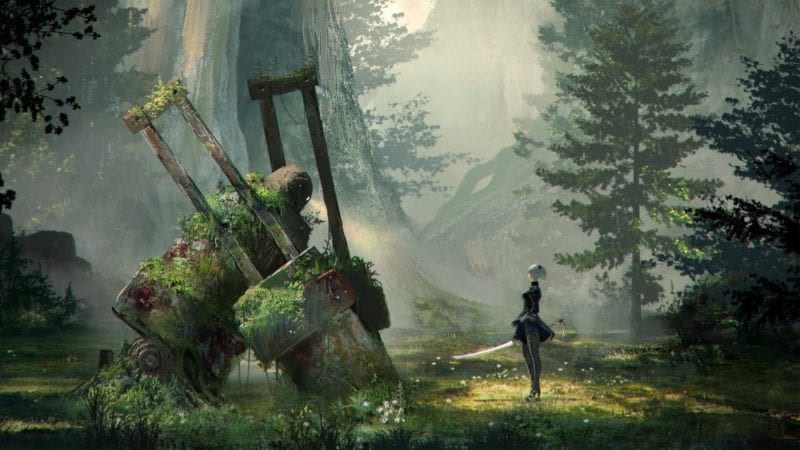








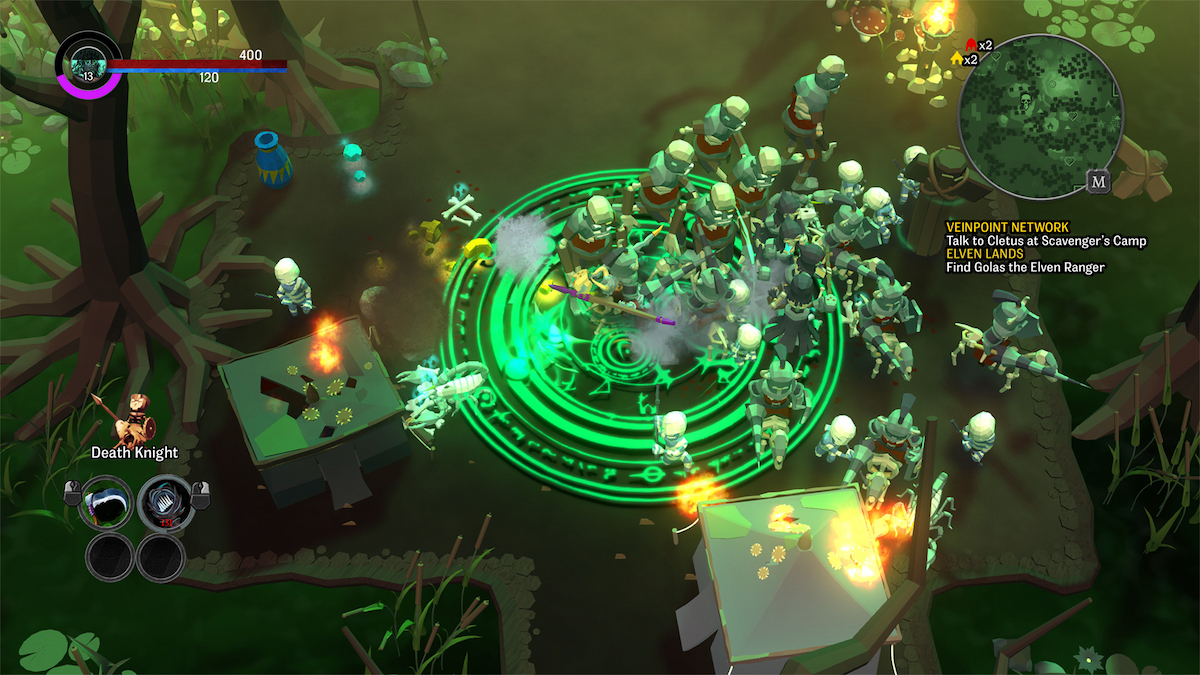

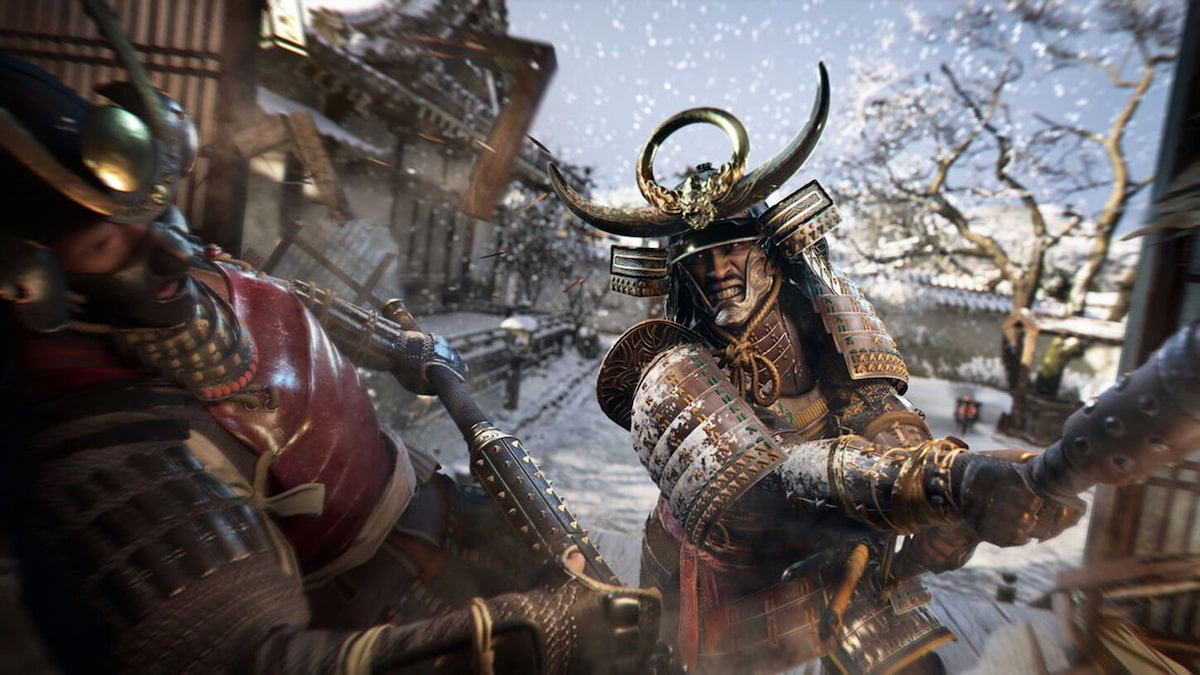

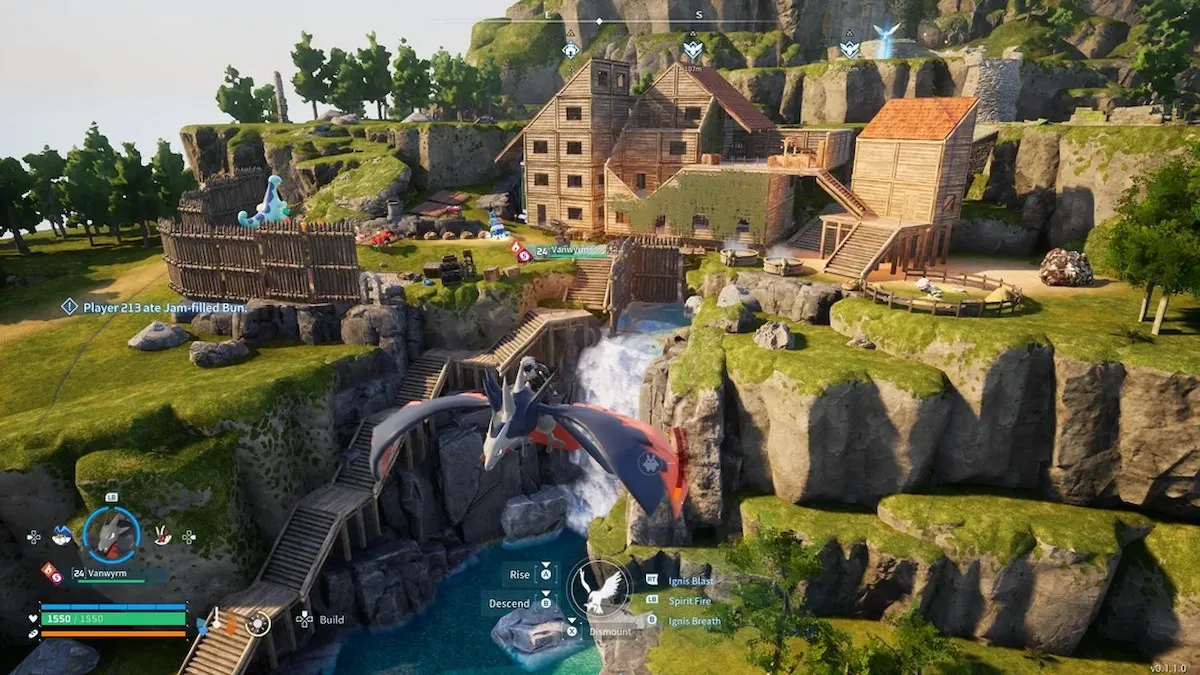


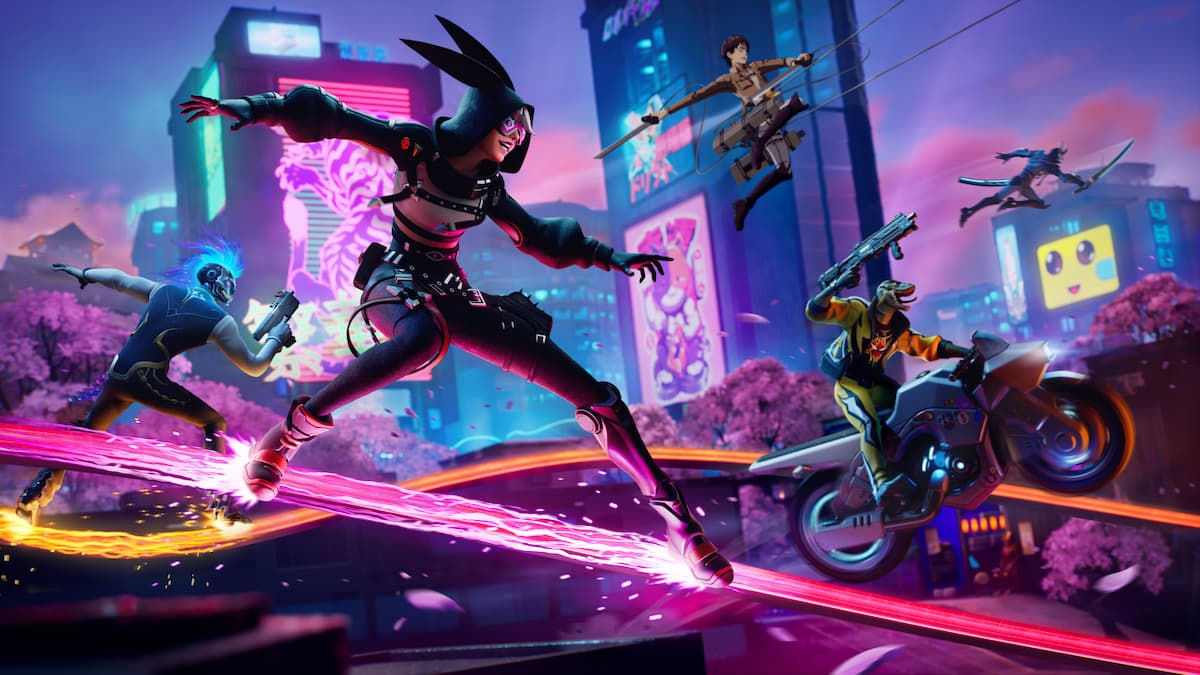
Updated: Feb 24, 2017 03:39 am